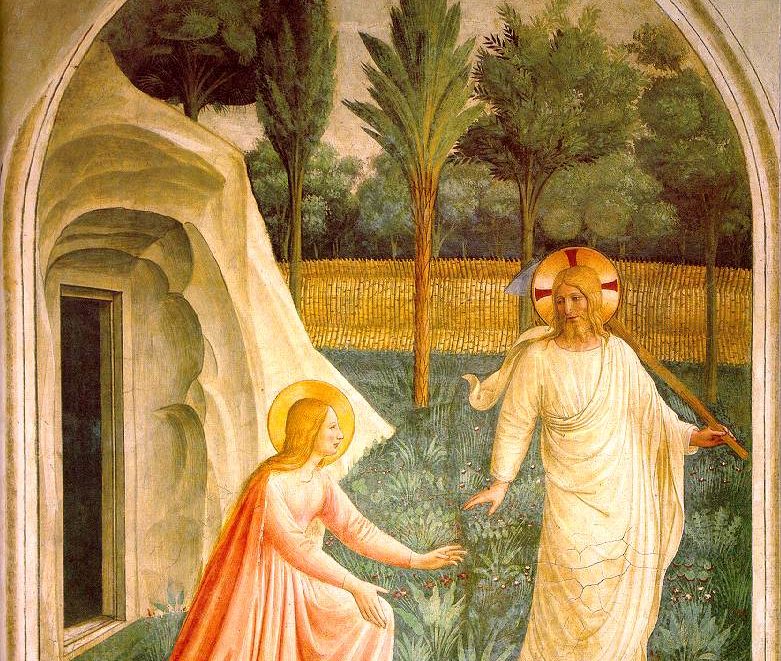
As we journey deeper into the Resurrection, an echo from Easter Day – Fr Bruno’s sermon.
In the Dominican Bible School in Jerusalem, in the common room, is a small model made decades ago by one of the brothers. It shows the bedrock foundation that lies underneath the Church of the Holy Sepulchre. In other words, the model traces the contours of the stone quarry in which Jesus was crucified and buried.
You see, Golgotha was a disused quarry repurposed by the Romans for executions. It had a handy rocky outcrop for the crosses; stone that had been rejected as substandard by the builders (cf. Ps 118:22). This lump of rock—Calvary—was no more than a stone’s throw from the other side of the quarry; a bank into which tombs were hewn.
‘Now, there was in the place where he was crucified a garden, and in the garden a new tomb…’ (Jn 19:41)
What a garden… I wonder if the soldiers would even have removed the crosses by that morning. In the early dawn, the shadow of the cross would literally have fallen across the face of that garden of earthly delights.
Mary Magdalene knew where to go. Stumbling to the quarry floor in the morning dark, it is not clear from John’s Gospel why she came there. Maybe she doesn’t know herself. Do any of us know really why we go to graves?
The thing is, she shouldn’t really be there; a woman alone, the sabbath barely over, going to the bloodstained dump where the Romans executed criminals. Who knows what sort of people were to be found among the tombs—dead… or alive…
And she sees that the tombstone has been removed… Scrambling up the bank, she thinks ‘they have taken him from the tomb…’ Surely, they are the Romans… or worse. So she runs to Simon Peter and the disciple Jesus loved.
But their response is little different to hers, running in the dawn to the killing ground to see… what? Bloodied stone, vegetation on the quarry bed?
Remember Jesus’s challenge to the crowds about John the Baptist: ‘what did you go out into the wilderness to see? A reed shaken by the wind?’ (Matt 11:7//Luke 7:24)
What do the disciples see? They see a stone askew, a cross’s silhouette, an empty tomb… The men look into the tomb and see linen cloths once bound around a corpse now unwrapped and laid aside like yesterday’s clothes. The soldiers had gone further than removing Jesus, had they stripped his remains?
What do the disciples think?
I paint this rather stark picture of the morning tomb scene to help us understand the extraordinary paradox expressed in John’s gospel.
‘he went into the tomb and he saw, and he believed: for they did not yet understand the scripture that it was necessary for him to rise from the dead’ (Jn 20:8-9).
If they didn’t understand that Jesus had risen, what did the disciple believe? What had he seen?
While the word used (pisteuo) most commonly means ‘believe’—it is all over the letters of St Paul— it can mean to trust or to be confident in. The beloved disciple sees, and he believes – meaning, he is certain about what he sees. And he sees nothing, no soldiers, no body, no risen Lord. His testimony is true, as far as it goes, that the tomb is empty, and then he goes home (Jn 20:10).
I have seen the tomb too, in Jerusalem, and the beloved disciple is right – it is empty. But what totally transforms this fact is the encounter with the risen Lord who was not in the tomb but was there to embrace John in the Upper Room and feed him on the beach; who comforted Mary Magdelene and poured forth the Spirit of the living God.
As the Easter season unfolds, we will hear more about these encounters with the risen Christ. But today, on the very day of the Lord’s Resurrection, the disciples’ confusion contrasts with our encounter with the risen Christ. Today, we know more than the disciples – that Jesus Christ is risen.
